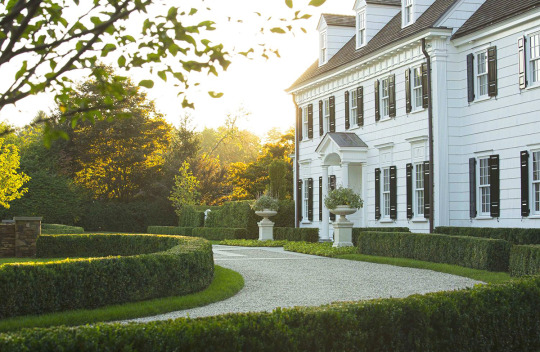#property/colony
Video
patenting does not equal invention.
patenting is the colonization of intellectual property.
invention requires the collective efforts of a diverse group of people over time.
1K notes
·
View notes
Text
l'manburg is colonialism is out lmanburg is stantwt is in
#calling lmanburg in universe colonialist tends to miss the point imo#in universe the server was just too small and the whole idea of land ownership and such and how lmanburg played into that#fits weirdly with the idea of lmanburg as a colonial power#like. dream smp members were allowed to claim property and tell people 'fuck off my lawn' yknow#but the moral bullshit in lmanburg's conception and the divisions it purposefully created to put down other people#in order to create this whole sense of identity crafted purely for shitting on others and Justify it through a moral lens#that kind of assholery has nothing to do with who actually has claim over the land and whatever#and i think focusing on the latter often misses the point
107 notes
·
View notes
Note
Do people have the right to own property?
Legally? Yeah you can own land. Morally? That’s a bit more grey. I tend to think land stewardship is a more ethical concept. I often look to my indigenous friends for guidance on this.
#property#property rights#land ownership#owning land#land back#steward of the land#land stewardship#indigenous people#indigenous land#colonialism#colonists#stolen land#leftist#leftblr#communist#socialist#communism#socialism#anti capitalist#anti capitalism#leftist politics#human rights#anon#leftist answers#questions
34 notes
·
View notes
Text
In this remarkably rich account of land and profit-making in colonial Calcutta (now Kolkata), Debjani Bhattacharyya traces the transformation of marshes, bogs, and muddy riverbanks into parcels of fixed, bounded, and alienable property under British colonial rule. Framed evocatively as a “history of forgetting” (6), Bhattacharyya details the everyday enactments and contestations of imperial power undertaken by colonial officials and merchants, hydrographers, Indian property owners, urban planners, surveyors, and speculators between the 1760s and 1920. Over this period, the fluid and culturally multivalent spaces of the delta were translated and transformed into “dried urban landscapes of economic value” (12). [...] [T]he economization of space was so encompassing that earlier ways of understanding and inhabiting the delta’s shifting lands and waters were [obscured] [...].
The British thus had to produce landed property both conceptually and materially in a process that proceeded through two entangled registers of power. The first was the legal register, which translated shifting and indeterminate aqueous spaces into apparently solid landed property through modes of legal classification and arbitration. The second register of power concerned hydraulic technologies of drying and draining the landscape (10), which materialized these legal categorizations in the production of urban space.
By the early twentieth century, these “technologies of property” (5) had produced new lines between land and water in the city and rendered its fluid ecologies, such as marshes and bogs, as valuable “land-in-waiting” (172) for property development and financial speculation. [...]
[T]he delta’s fluid ecology emerges at times as a limit on the property-making activities of the East India Company and the British Crown [...]. Bhattacharyya’s account highlights the mobility of the delta’s fluid landscape, with water, silt, and mud taking on agentic roles and shaping historical trajectories. [...] [Bhattacharyya] provides a fascinating account of the meanings of rivers and other watery spaces in Bengali cultural life, drawing on folk songs, poetic genres such as the maṅgalkāvya, storytelling, and forms of artistic representation such as painted narrative scrolls. [...] Bhattacharyya recovers forms of relationality and claim-making in the fluid deltaic environment that exceed the representations of colonial cadastral surveys and revenue records. [...]
[H]owever, Calcutta became increasingly disconnected from its watery past. [...] [There was an] increasing entanglement of the urban land market with infrastructural projects to dry land and control water. These included the excavation of an extensive network of canals; the construction of docks in Khidderpore and the draining of the Maidan [...]. A collective amnesia about Calcutta’s fluid ecologies set the stage for the emergence of a speculative real estate market by the beginning of the twentieth century [...]. This period saw Calcutta’s remaining wetlands and marshes rendered as “land-in-waiting for property development” (169) in a process that continues to the present day.
---
All text above by: Calynn Dowler. “Debjani Bhattacharyya, Empire and Ecology in the Bengal Delta: The Making of Calcutta.” Asian Ethnology Volume 80 Issue 1. 2021. [Bold emphasis and some paragraph breaks/contractions added by me.]
#ive read bhattacharyyas book and her focus on the lethal power of property laws and legal engineering in bengal#is also the focus of two other scholars of bengali environment and history who are kuntala lahiri dutt and rohan dsouza#all three highlight how colonial lawmaking converted fluid deltas mangroves rivers into property#to tax and control land yes but also to strengthen landlords and hierarchies to force the poor into debt and wage labour and plantation work#abolition#ecology#imperial#colonial#mangroves
21 notes
·
View notes
Text

everyone say good morning mittens.
#there are a bunch of strays that live on the property near my aunt and uncles house#my favorite TNR colony#they’re so beautiful#i will post more pics of them eventually#kitty#ej speaks
8 notes
·
View notes
Text
"So the concept of “prison abolition” doesn’t simply mean abolishing prisons, but means working and struggling for a transformation of society as the groundwork necessary to work toward the abolition of prisons. Angela Y. Davis is author of a book called Are Prisons Obsolete? [12] Prisons are obsolete in the sense that the massive expansion of incarceration has clearly not dealt with the ostensible social ills imprisonment is supposed to ameliorate, and prison abolitionists have worked tirelessly to denaturalize the prison and incarceration as inevitabilities. Abolition is about breaking down and getting rid of the political and economic conditions that make the current prison system viable, and that is what it means to “make prisons obsolete.” If we think about property abolition, it requires us to think about what a world beyond the norms, structures, and psychic-symbolic centrality of private ownership might look like, and what the preconditions for such a shift might be. What I’ve learned through a recently completed project, a book of interviews titled Revolutionary Feminisms, [13] is that abolition work begins with centering and recognizing the transformative work, a work of survival really, that exists around us, has always existed, and upon which we must build. "
#Daniel Loick#Brenna Bhandar#colonial lives#property#abolition#Ruth Wilson Gilmore#Hortense Spillers#Cedric Robinson#What does it mean to be an owner?#ownership
17 notes
·
View notes
Text

[Embedded tweet described in alt text of above image. Image embedded within the tweet is a section of a book page that reads as follows. Bold text is highlighted in the original image.]
Mollie's family was straddling not only two centuries but two civilizations. Her family's distress increased in the late 1890s as the U.S. government intensified its push for the culmination of the assimilation campaign: allotment. Under the policy, the Osage reservation would be divvied up into 160-acre parcels, into real estate, with each tribal member receiving one allotment, while the rest of the territory would be opened to settlers. The allotment system, which had already been imposed on many tribes, was designed to end the old communal way of life and turn American Indian tribes into private-property owners - a situation that would, not incidentally, make it easier to procure their land.
[End book excerpt.]
More about this here (link). The law (or one of the laws) putting this practice of allotment into motion was called the Dawes Act.
#dawes act#assimilation#anti-indigenous racism#anti indigenous racism#racism#genocide#cultural destruction#cultural erasure#imperialism#colonialism#manifest destiny#alienation#private property is theft#private property#capitalism
16 notes
·
View notes
Text

#palestine#gaza#israeli war crimes#war criminals#israeli occupation#israeli lies#israeli terrorism#resistance forces 💪#gaza genocide#usa taxes money#usa#uk#uk property#uk politics#united kingdom#spain#world press photo#world wide web#worldwide#colonialism
10 notes
·
View notes
Text
Barbados plans to make Tory MP pay reparations for family’s slave past
From the article:
'Barbados became a republic a year ago after it removed Queen Elizabeth II as head of state.
The Drax family pioneered the plantation system in the 17th century and played a major role in the development of sugar and slavery across the Caribbean and the US.
#barbados#reparations#transatlantic slave trade#british history#colonial legacies#the uk is not innocent#the drax family were amongst the pioneers of plantation slavery in N.America & the Caribbean#they received a large compensation at abolition for 'loss of property'#the drax family still take income from their property in barbados#yet tried to distance themselves from any responsibility
45 notes
·
View notes
Text






Eddie Kingston vs Fire Ant (1/4)
Chikara : MARTYR YOURSELF TO CAUTION
September 18, 2011
#wrestling#eddie kingston#fire ant#the colony#chikara#the mad king#the hot property#chikara’s hottest property#aew#orange cassidy
98 notes
·
View notes
Text

#dream house#house goals#garden goals#driveway#luxury home#luxury property#old money#colonial#colonial revival
120 notes
·
View notes
Text
got over the biggest hump of my paper (the intro) (200 words) now i get to waste the next two hours <333
#im actually so excited to get into the theory/thesis part of my paper bc its soooo interesting !!#and i read the most fascinating journal article on the neo colonial aspect of intellectual property protection and rights.....#tbh like law lowkey does seem more and more appealing on the daily...i feel like i could study intellectual property rights issues for ages
2 notes
·
View notes
Note
YOUVE BEEN TO CASTLE BAM??????????!!!!!!!!!!!!!! WTF
LMFAOOOOO YES I WAS THERE NEW YEAR’S EVE WITH MY GIRLFRIEND DON’T TELL BAM. also drove down joppa road that night #ween
#tape.text#we were going to drive up to new york#but decided against it as we both hate bumpy ass shitty colonial roads#so. drove to castle bam and saw some foxes on the property lol#we drove past the one cafe that was in haggard i think
1 note
·
View note
Text
does kika’s family own that humongous property she’s always posting pictures at bc damn
#giving old money#but like portuguese old money is colonialism money#nice property tho#cute architecture#kika gomes#wags
9 notes
·
View notes
Quote
The encroachment and conversion of Bengaluru’s wetlands into alienable property is not a new phenomenon. Until the mid-20th century, a network of engineered and naturally occurring water reservoirs called keres in Kannada or “lakes/tanks” in English extended across the landscape. More than a thousand such tanks interconnected through canals (today’s raja kaluves) once crisscrossed the urban district of Bengaluru. As anthropologist David Mosse has chronicled, village-managed tanks were developed all over South India four centuries ago in response to the vagaries of monsoonal rainfall and the cultural and political traits of pre-colonial agrarian states.
Malini Ranganathan, ‘Why Bengaluru is not immune to floods: It’s all about land (and money)’, Citizen Matters
#Citizen Matters#Malini Ranganathan#Bengaluru#India#encroachment#wetlands#alienable property#keres#raja kaluves#David Mosse#South India#monsoonal rainfall#pre-colonial agrarian states
9 notes
·
View notes
Text
“These days, he lived in a tiny room above the St. Agnes rectory. The entire place had been built in the late seventeenth century and looked it."
ooohhh m*ggie why would you do this to me. not only is the oldest Catholic church in Virginia is from 1795, the late eighteenth century, but the colony of Virginia was founded by Anglicans with no0o0o0 interest in religious plurality until compelled by, like, the first amendment. idk about virginia but there's still cultural differences between catholic and protestant communities in MA (especially irish catholic and protestants!) which might have been really interesting to explore in lynch family mythology, assimilation, etc... but no.
Virginia has fewer than twenty extant pre-1700 structures, all in the eastern part of the state. Even if the structure were that old -- say, a first-period Protestant church later converted to a Catholic one; not common but not unthinkable, if not accurate to this setting -- any extant seventeenth-century structure would be listed as an historic property, probably as a national historic landmark, almost certainly maintained to a decent standard by a nonprofit trust and board. and not really on the market for a broke seventeen-year-old to rent out.
i truly love st. agnes as a setting but the only info she gives us about it RIPS me right out of there. move the setting for the whole series to massachusetts and we're good to go tho!
#im so sorry but this is who i am#i just can't suspend my disbelief about historic ecclesiastical preservation#adam is living the historic property caretaker dream#and summoning vines in the lead pipes#maybe that's part of his problem#st. agnes#the best thing about TDT: heartfelt emotional breakdowns in the greater boston metropolitan area 495 corridor!#this is why i almost never read fiction and instead reread abbot lowell cummings' seminal framed houses of the massachusetts bay colony#TRC
3 notes
·
View notes